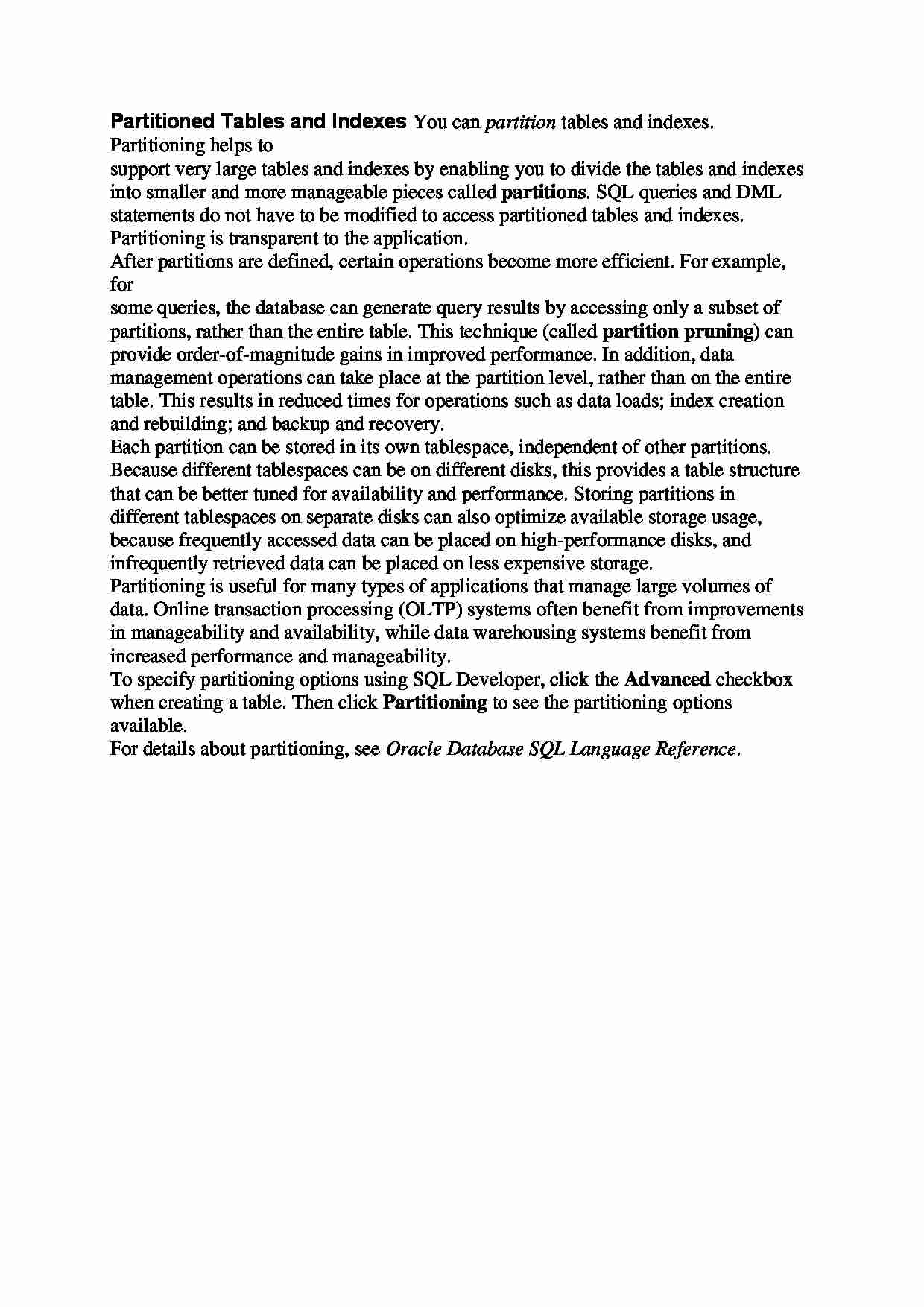
Partitioned Tables and Indexes You can partition tables and indexes. Partitioning helps to
support very large tables and indexes by enabling you to divide the tables and indexes
into smaller and more manageable pieces called partitions. SQL queries and DML
statements do not have to be modified to access partitioned tables and indexes.
Partitioning is transparent to the application.
After partitions are defined, certain operations become more efficient. For example, for
some queries, the database can generate query results by accessing only a subset of
partitions, rather than the entire table. This technique (called partition pruning) can
provide order-of-magnitude gains in improved performance. In addition, data
management operations can take place at the partition level, rather than on the entire
table. This results in reduced times for operations such as data loads; index creation
and rebuilding; and backup and recovery.
Each partition can be stored in its own tablespace, independent of other partitions.
Because different tablespaces can be on different disks, this provides a table structure
that can be better tuned for availability and performance. Storing partitions in
different tablespaces on separate disks can also optimize available storage usage,
because frequently accessed data can be placed on high-performance disks, and
infrequently retrieved data can be placed on less expensive storage.
Partitioning is useful for many types of applications that manage large volumes of
data. Online transaction processing (OLTP) systems often benefit from improvements
in manageability and availability, while data warehousing systems benefit from
increased performance and manageability.
To specify partitioning options using SQL Developer, click the Advanced checkbox
when creating a table. Then click Partitioning to see the partitioning options available.
For details about partitioning, see Oracle Database SQL Language Reference.
... zobacz całą notatkę



Komentarze użytkowników (0)